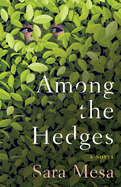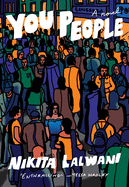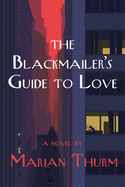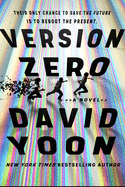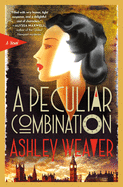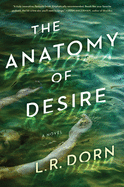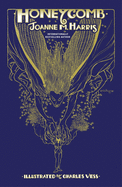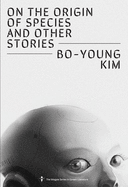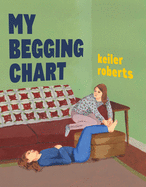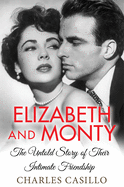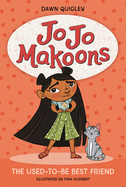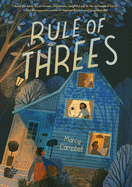 Caseen Gaines is an author, director, educator and pop culture historian. His books include We Don't Need Roads: The Making of the Back to the Future Trilogy and The Dark Crystal: The Ultimate Visual History. He is also co-artistic director of a nonprofit theater company he cofounded and a high school English teacher in New Jersey. Footnotes: The Black Artists Who Rewrote the Rules of the Great White Way, available now from Sourcebooks, is his fifth book.
Caseen Gaines is an author, director, educator and pop culture historian. His books include We Don't Need Roads: The Making of the Back to the Future Trilogy and The Dark Crystal: The Ultimate Visual History. He is also co-artistic director of a nonprofit theater company he cofounded and a high school English teacher in New Jersey. Footnotes: The Black Artists Who Rewrote the Rules of the Great White Way, available now from Sourcebooks, is his fifth book.
What inspired you to dig into the story of Shuffle Along and its creators?
I saw the 2016 iteration of Shuffle Along, which told some of the backstage story, the day before it ended its brief Broadway run. I couldn't shake the feeling that its premature ending was a continuation of what had been happening to [the show's creators] Noble Sissle, Eubie Blake, Flournoy Miller and Aubrey Lyles since the 1920s. As I began to dig deeper into each of their lives, there seemed to be something important about not forgetting these four men. They are just a few of countless Black Americans who forever changed this country and have long been denied their due.
Explain what your research process was like--delving into archival materials, recordings, newspaper clippings and other sources.
I spent a lot of time visiting libraries and archives in both Harlem and Baltimore, and loved every second of it. Several of the book's main subjects left behind so much ephemera, audio recordings, even some unfinished and unpublished memoirs. The information was decentralized and required some unearthing, but there seemed to be a never-ending well of information. Initially it felt daunting, but in a way, the wealth of information made it easier for me to focus on the story I was telling and leave out extraneous details. I also developed a relationship with Noble Sissle's son, which has been a real asset to this project.
Shuffle Along was a very different production than previous all-Black theatrical shows--vaudeville and minstrel shows--but it still contained moments where the Black actors wore blackface or played to racial stereotypes. That was a complex dynamic.
Footnotes is set in such a specific moment in American history. Each of the four main subjects were just a generation removed from slavery, and yet all but one were college-educated. That may feel inherently contradictory, but in the 1920s, like today, being a Black American is often to live a life of contradiction, or at least complexity.
Shuffle Along was the brainchild of two Black musicians who performed in tuxedos, and two blackface comedians who trafficked in antebellum humor. This may seem regressive, but it was the opposite; and this balance helped make the show palatable to white audiences and allowed it to play in the Deep South. It also is a clear illustration of the dance people of color do every day to have their best shot at success in America.
Although the creators of Shuffle Along were all Black men, the show also opened doors for Black women and the kinds of roles they were able to play onstage.
Prior to Shuffle Along, the prevailing consensus was that white people, and white women, specifically, would never pay to see Black women on stage unless they were playing a stereotypical role, like a mammy or a jezebel. Sissle, Blake, Miller and Lyles deserve credit for creating legitimate roles for Black women, and also providing opportunities for them to shine in the chorus. For the first time, theater-goers were able to see women as artists: skilled dancers, singers and performers, and not just attractive set dressing like they were in popular shows like Florenz Ziegfeld's Follies. Josephine Baker became a star as a chorine, and there are other women, like Florence Mills, Adelaide Hall and Fredi Washington, who first got their big break in Shuffle Along before reaching superstardom.
Several of the show's creators and musicians spent time in the military and played in military bands, and their experiences abroad were vastly different than their experiences at home in the U.S. How do you think that experience informed the show?
Noble Sissle, in particular, was significantly impacted by his time overseas. He was part of the all-Black 369th Infantry Regiment, better known as the Harlem Hellfighters, and they were instrumental in introducing jazz to Paris. Seeing the way the French responded to culturally Black music reinforced the idea that white audiences in New York might be similarly captivated, and that authenticity mattered when it came to art. Additionally, by serving in the armed forces, Sissle developed a strong desire to be part of creating a more just America. Music was his medium, and Shuffle Along and jazz were means to that end.
What surprised you the most in your research?
I was surprised by how well-documented the lives of my subjects were, particularly in newspapers. There were so many Black publications at the time, and the artists in Footnotes were major celebrities of the day. I uncovered so many vivid anecdotes, and some of my favorites in the narrative are centered around minor characters, like Josephine Baker. Most people envision her as a fearless woman dancing topless in a banana skirt, but in Footnotes, we see her develop from an insecure teenager to an international superstar.
Why do you think the story of Footnotes is particularly relevant today, in a moment of widespread conversations about representation, racism and related issues?
Footnotes is a story about the importance of not only racial representation, but also racial and cultural authenticity. It's a reminder that Black creatives, and more broadly, people from all underrepresented groups, can produce excellent and commercially viable art, if the gatekeepers stay out of their way. But what's equally important is that it's also a story of appropriation, erasure, and the ongoing fight to be acknowledged for your worth. However, there's still an optimism that remains constant throughout the narrative. Footnotes is set against the backdrop of the highest period of racialized violence in the United States since the Civil War, an economic recession, and the aftermath of a global pandemic; yet, even in this landscape, these Black artists were able to achieve what seemed like the impossible. --Katie Noah Gibson
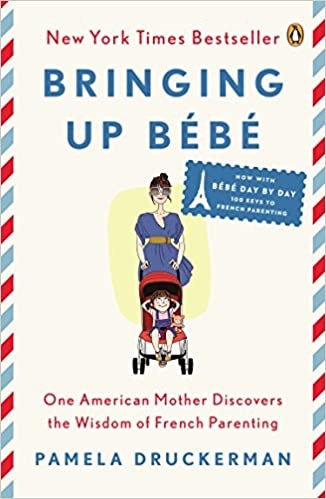 American expat Pamela Druckerman felt she was the only flustered parent amid a sea of serene, baguette-toting Parisian mothers. She shares all of the "wisdom of French parenting" she could glean in her entertaining and insightful Bringing Up Bébe (Penguin, $18). Though not all aspects of French parenting appealed to me, I was enamored by the idea of someday dining out on multi-course meals with my calm and serene toddler in tow, as French parents apparently do on a regular basis.
American expat Pamela Druckerman felt she was the only flustered parent amid a sea of serene, baguette-toting Parisian mothers. She shares all of the "wisdom of French parenting" she could glean in her entertaining and insightful Bringing Up Bébe (Penguin, $18). Though not all aspects of French parenting appealed to me, I was enamored by the idea of someday dining out on multi-course meals with my calm and serene toddler in tow, as French parents apparently do on a regular basis.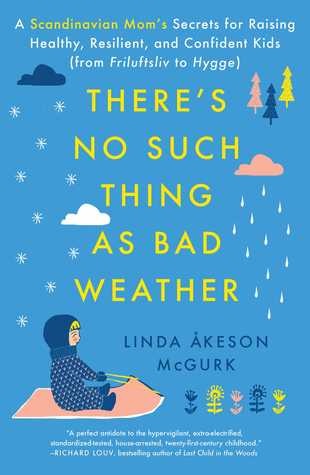 Looking for more insights into how to raise the little human who lives in my own house, I found nearly as many global parenting books as there are parenting styles. In There's No Such Thing as Bad Weather (Touchstone, $17), Swedish-born Lina Åkeson McGurk promises that the secret to raising healthy children is more time outdoors, year-round. Rina Mae Acosta and Michele Hutchinson put forth, in The Happiest Kids in the World: How Dutch Parents Help Their Kids by Doing Less (Experiment, $15.95), that what parents actually need to do is relax: less worrying and supervision, and fewer activities, yield happier kids--and happier parents. Meanwhile, in Battle Hymn of the Tiger Mother (Penguin, $17), Amy Chua set out to write a story about the benefits of raising children as Chinese parents do, in contrast to Western parents, and instead wrote about a "bitter clash of cultures" and her own journey through humility in parenting.
Looking for more insights into how to raise the little human who lives in my own house, I found nearly as many global parenting books as there are parenting styles. In There's No Such Thing as Bad Weather (Touchstone, $17), Swedish-born Lina Åkeson McGurk promises that the secret to raising healthy children is more time outdoors, year-round. Rina Mae Acosta and Michele Hutchinson put forth, in The Happiest Kids in the World: How Dutch Parents Help Their Kids by Doing Less (Experiment, $15.95), that what parents actually need to do is relax: less worrying and supervision, and fewer activities, yield happier kids--and happier parents. Meanwhile, in Battle Hymn of the Tiger Mother (Penguin, $17), Amy Chua set out to write a story about the benefits of raising children as Chinese parents do, in contrast to Western parents, and instead wrote about a "bitter clash of cultures" and her own journey through humility in parenting.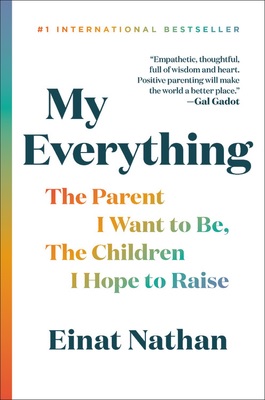 I almost set down My Everything: The Parent I Want to Be, the Children I Hope to Raise (Hachette Go, $28)--a bestseller in Israel--after the first few chapters; Einat Nathan's approach is very different from my own. But then I realized: I, like parents everywhere, can pick and choose what's right for me and my family, and raise a globally inspired human from the comfort of home. --Kerry McHugh, blogger at Entomology of a Bookworm
I almost set down My Everything: The Parent I Want to Be, the Children I Hope to Raise (Hachette Go, $28)--a bestseller in Israel--after the first few chapters; Einat Nathan's approach is very different from my own. But then I realized: I, like parents everywhere, can pick and choose what's right for me and my family, and raise a globally inspired human from the comfort of home. --Kerry McHugh, blogger at Entomology of a Bookworm


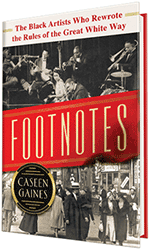


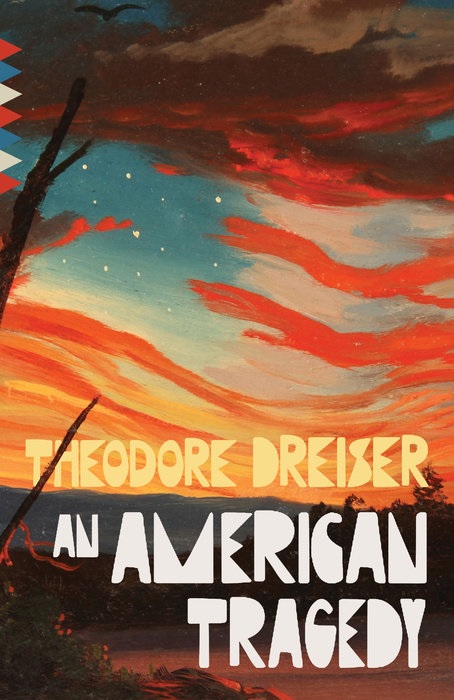 In Theodore Dreiser's 1925 novel, An American Tragedy, an ambitious but dim-witted and unscrupulous young man kills a farm girl he impregnated in order romantically to pursue a more promising socialite. The bungled murder lands him in the electric chair. Dreiser (1871-1945) based his book on the 1906 case of Chester Gillette, who killed pregnant Grace Brown while rowing on a lake in the Adirondacks. Gillette beat Brown, left her to drown and fled to a nearby town, where he was quickly arrested. Like Dreiser's character, Gillette's shifting stories and the ample evidence against him resulted in conviction and execution. The real murder of Grace Brown became a national sensation. As a journalist, Dreiser observed that this kind of crime, in which a young man killed a poorer pregnant girl in order to pursue a richer one, occurred with shocking regularity in the United States.
In Theodore Dreiser's 1925 novel, An American Tragedy, an ambitious but dim-witted and unscrupulous young man kills a farm girl he impregnated in order romantically to pursue a more promising socialite. The bungled murder lands him in the electric chair. Dreiser (1871-1945) based his book on the 1906 case of Chester Gillette, who killed pregnant Grace Brown while rowing on a lake in the Adirondacks. Gillette beat Brown, left her to drown and fled to a nearby town, where he was quickly arrested. Like Dreiser's character, Gillette's shifting stories and the ample evidence against him resulted in conviction and execution. The real murder of Grace Brown became a national sensation. As a journalist, Dreiser observed that this kind of crime, in which a young man killed a poorer pregnant girl in order to pursue a richer one, occurred with shocking regularity in the United States.